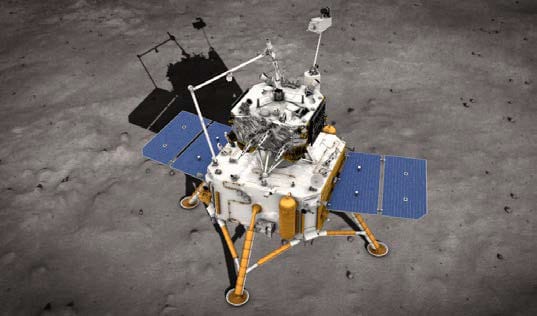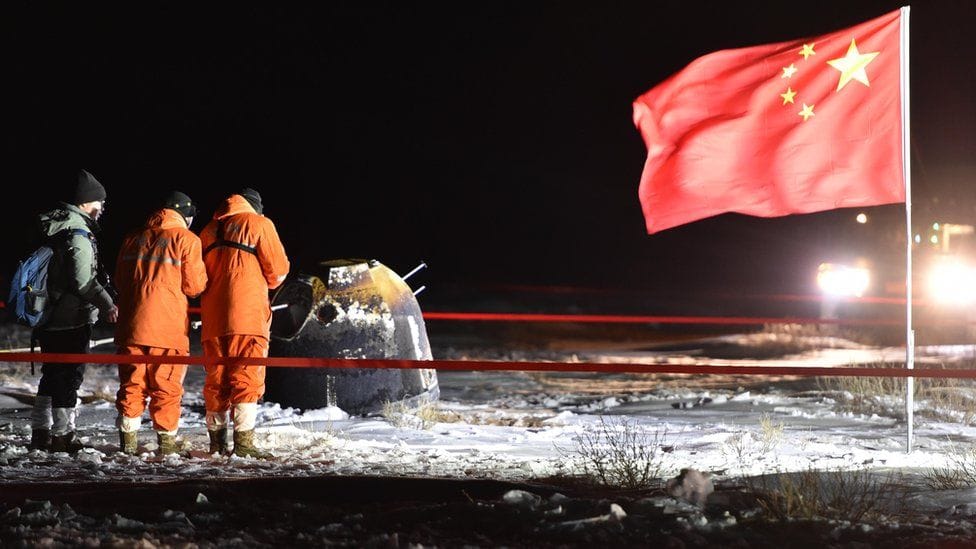
Chang’e-5 landed on the far side of the Moon-an area not sampled by the Soviet or American missions. The mission collected fragments of lunar rocks for analysis on Earth. Here’s what the samples from China’s lunar mission can tell us.
All about China’s lunar mission
Chang’e-5, China’s lunar mission delivered about 3kg of lunar rock fragments and dust to earth on December 16, 2020. Chang’e-5 landed in the ‘far-side of the moon. This is the same area that was not sampled by the Soviet and American missions almost 50 years ago. The rock samples were the youngest lunar rocks to be brought to earth. Additionally, they are much different from those brought in for analysis before.
At the virtual session of the 2021’s Europlanet Science Congress (EPSC) meeting, Yuqi Qian, a Ph.D. student from the China University of Geosciences presented the early findings. Qian’s report revealed geological mapping to link exotic fragments in samples to characters near the landing site.
What do the findings reveal?
According to the release that 90 percent of the material collected was from the immediate surroundings of the landing site. The samples are a part of ‘mare basalts’. Moreover, they are volcanic rocks and are visible to us on earth as dark grey areas on the moon. However, the remaining ten percent of the samples were different and had exotic compositions.
The exotic chemical makeup of the 10 percent holds secrets about the different parts of the lunar surface. Additionally, it can also provide details on the types of space rocks that came in contact with the Moon’s surface. Qian and researchers from the University of Münster and Brown University also researched the sources of beads of rapidly cooled glassy material. It was traced to have glassy droplets called ‘Rima Sharp’ or ‘Rima Mairan’. Hence, they hold secrets of past volcanic activities and episodes of energetic activity. Additionally, it also showed that several fragments belonged to Harpalus, a lunar crater.
